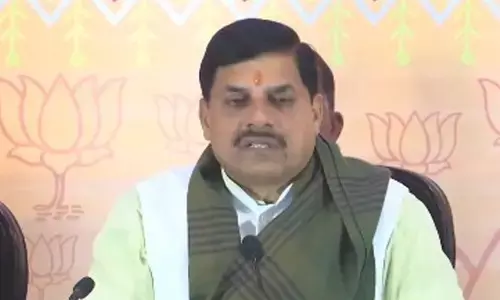Digital innovations key for inclusive growth

Representational image
Digital adoption in India shows a rapid rise in recent years with the Covid pandemic acting as a catalyst.
Digital adoption in India shows a rapid rise in recent years with the Covid pandemic acting as a catalyst. One thing that differentiates the country from other emerging economies and even from many western nations is the development of India-specific digital stack. UPI (Unified Payments Interface) is the rising star of Indian digital stack. With close to seven billion transactions a month, UPI has helped the country to take a great leap in payment space. Currently, many countries are trying to emulate the UPI-model for providing swift services to their citizens. Similarly, usage of Aadhaar has been wide spread for various banking and public services in recent times. Aadhaar authentication touching to the tune of 1.5 billion times a month is being used for providing various services. DigiLocker with 135 million users has more than 5.5 billion verifiable documents. Such a huge database is making life easier for people as document verification is being done within no time. During the Covid pandemic, CoWIN app has emerged as the most useful digital platform for detection of the affected people. Later, it has been used successfully to vaccinate a billion people. With the success of these digital platforms, India has become more ambitious now to come up with many new initiatives.
For example, CBDC (Central Bank Digital Currency) has been floated by the Reserve Bank of India on a pilot basis. With this piloting, India has emerged among the select group of countries to have digital currency of its own. Open Network for Digital Commerce (ONDC) is another example of India's quest for spreading digital commerce across the length and breadth of the country. The vision of ONDC is to democratise e-commerce so that every citizen can use e-commerce to buy products and services from every seller, MSME, and small business in the country. With 26 participants and more than 800 merchants, ONDC is rapidly expanding its footprints.
So, India's digital stack puts the country in good stead to increase digital adoption among the general public. In 2023, the pace of such transformation is likely to increase. One of the key forces behind such adoption will be the rolling out of 5G across the nation. Currently, the rollout is limited to a few cities. But, as the year progresses, availability of 5G will increase. This is likely to be a game changer in adoption of digital platforms across the country. However, despite such rapid adoption, there is still a significant chunk of people who are yet to come under this revolution. People living below the poverty line in both rural and urban areas can't afford smartphones. The digital literacy among them is also low.
Therefore, it is vital that all stakeholders work for raising the living standard of people living at the bottom of the pyramid. Moreover, India's digital solutions should be unique to take care of the needs of the masses. UPI 123PAY is one example of such innovation. This solution enables feature phone users to transact without internet connections. India needs more such innovations for an inclusive growth.














